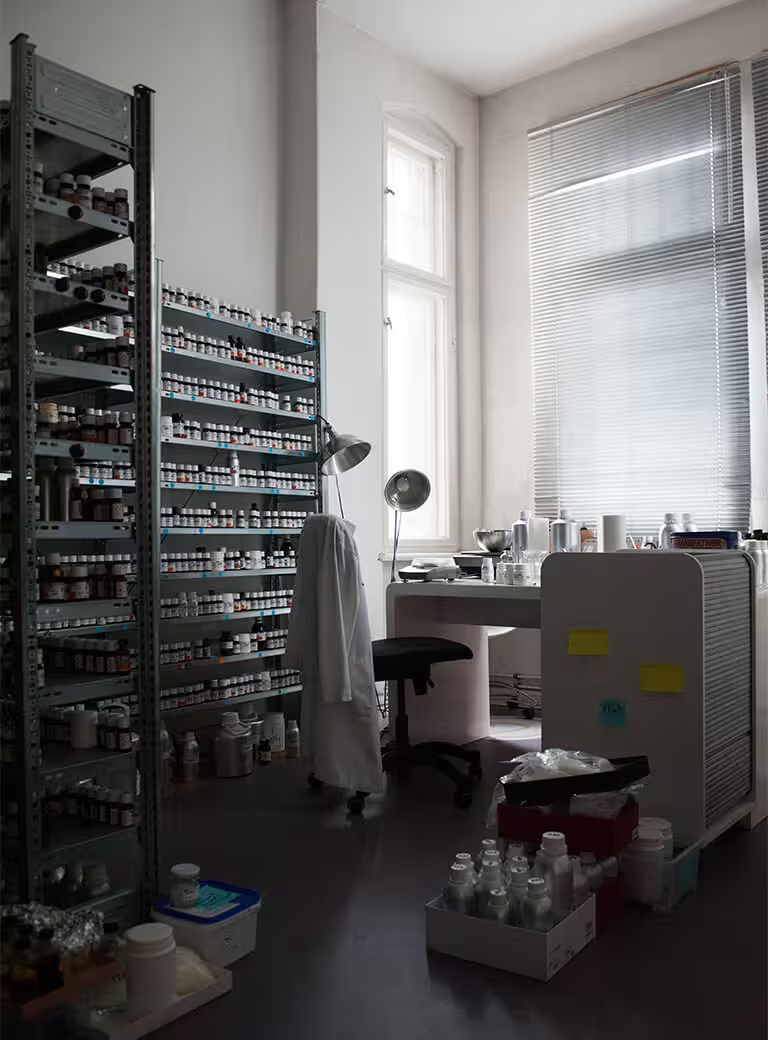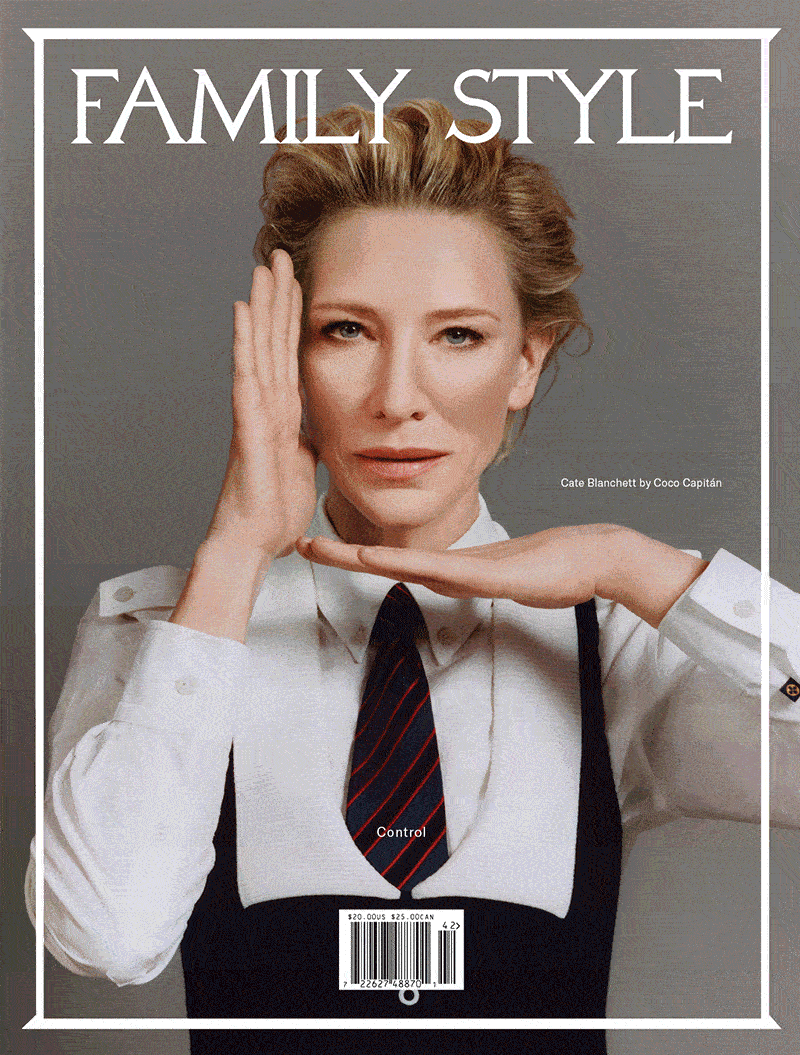
Image courtesy of Sissel Tolaas.
Sissel Tolaas is a professional smeller. Some have called her an “odor artist.” Others, a “fragrance scientist.” She prefers “forensic chemist.” With a background in chemistry, mathematics, linguistics, and art from the universities of Oslo, Warsaw, Moscow, St. Petersburg, and Oxford, it is impossible to pinpoint her. “I call myself a ‘professional in-betweener,’” she tells me over Zoom one morning in February.
Born in Scandinavia, Tolaas left home when she was 17—first for Poland and then for Russia—and has followed her nose around the world ever since. Now she’s based in Berlin. But the week before we spoke she was in Muharraq, Bahrain working on preserving the “olfactory heritage” of the Pearling Path, a UNESCO cultural heritage site tied to the 19th-century pearl industry. The week after, she traveled to Paris for the Balenciaga Fall/Winter 2024 show, having collaborated with the brand since 2019 on a Smell Molecule Archive.
Growing up near the ocean, Tolaas, whose signature look is a blunt, blond bob, was always curious about the environment. “I was nerdy, and I never gave up when I wanted the answer,” she says. She was curious about the “invisible information” in the air. Why wasn’t smell taken as seriously as the other senses as a scientific pursuit? “It has so much to do with intrinsic, emotional, individual things,” she reflects—qualities that apparently make some think it “does not deserve a place in the context of intellectual discourse.”
Since 1990, Tolaas’ focus has been smell molecules, or the “air’s alphabet,” as she calls it, and the way smells can help us communicate. “Where there is air, there is Sissel Tolaas,” she says. “And there is air everywhere.” She spends just as much time performing experiments and doing research out in the world as she does working in the lab. “I use art as a platform to perform my research,” she emphasizes. “And then I bring the result of the experiment back to the lab.” In 2002, Tolaas established the SMELL RE_searchLab in Berlin—a fully operating chemistry lab for studying the topic of smell. There, among other inventories, is a “smell archive” containing close to 15,000 smell samples in airtight jars.

Image courtesy of Sissel Tolaas.
She compares the way she works to how smartphone images can be broken into pixels. “What I do is I collect an invisible image and then break it up into molecules. Those molecules correspond to my database. With that recording, I can replicate and re-understand molecules from any source.”
For Balenciaga’s Smell Archive, she extracted smell molecules from the brand’s physical archives as well as items that belonged to Cristóbal Balenciaga, plus its historic Parisian couture house. Among the commercial applications has been her Haute Couture smell, released in 2022, featuring notes of tobacco, old paper, tanned leather, and the oiled metal of sewing machines, all packed into a candle.
Tolaas has also partnered with organizations including UNICEF and UNESCO, as well as universities like Harvard and MIT, using smell and the attached emotions to raise awareness about various smell(y) issues—and the power of smell in general. She once filled a room with the scents of nutrition fed to farmed salmon, commenting on the environmental impact.
“Smell can bring a sense of joy and playfulness to serious issues,” she says. “There’s a reason that people laugh when somebody farts; people don’t laugh when you let them smell perfume or detergent.”
This spring, Tolaas worked with The Metropolitan Museum of Art’s Costume Institute to develop a smell molecules archive to accompany key installations in its latest exhibition, “Sleeping Beauties: Reawakening Fashion.” She explains: “It’s an attempt to reawaken these garments with contemporary and scientific knowledge—to make the items alive again.” The particles that remain on a dress can give clues about who owned it and what they did while wearing it. What exactly Tolaas has found, though, is top secret until the show’s opening in May.
Although Tolaas’ nose has been at it for the last 25 years, she feels like people are only now starting to understand the real-world value of her work. Because of the pandemic, we’re all more aware of the role smell plays in our lives—and how big of a bummer it is living without it. “If we don’t start to use it more properly soon, it will go extinct,” Tolaas warns. So go ahead, take a big whiff.













